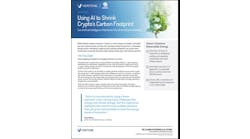The frequency and duration of power outages is on the rise. This excerpt from, “Fuel Cell Microgrids: The Path to Lower Cost, Higher Reliability Cleaner Energy,” explains how fuel cell microgrids keep the power flowing.
By Mihai Simonia/Shutterstock.com
The digital world we live in not only makes us more dependent on electric power, but also increases our vulnerability to interruptions in electrical service, even brief interruptions.
Cybersecurity threats heighten those concerns, as do extreme weather, most notoriously Superstorm Sandy, which knocked out power for 8.1 million customers in 17 U.S. states in 2012.
More recently, reliability worries have centered around the 2016 Aliso Canyon methane leaks in California that threatened the fuel supply for about 10 GW of power plants in Southern California.
The frequency and duration of power outages has been on the rise in the United States since 2008, according to Department of Energy and North American Electric Reliability Corp.
A 2014 report from Climate Central found that weather related power outages doubled over the 10-year period studies. And a 2013 White House report found that weather related power outages between 2003 and 2012 were estimated to cost the economy between $18 billion and $33 billion.
In a 2014 report, the Connecticut Public Utilities Regulatory Authority found that cybersecurity posed “serious potential damage” to the state’s utilities.
One response to these threats has been an uptick in microgrid installations by utilities. Utilities all across the country, including United Illuminating in Connecticut, Oncor in Texas, Central Hudson Gas & Electric in New York, DTE Energy in Michigan, San Diego Gas & Electric and Southern California Edison, are building microgrids.
Fuel cell microgrids to the rescue
As localized and self-sufficient units, fuel cell microgrids can disconnect from the traditional utility power grid to operate autonomously. That ability to “island” from the larger grid means that microgrids can strengthen grid resilience and help mitigate grid disturbances.
Even stand-alone fuel cells—those not within a microgrid —can offer enhanced resiliency. The fuel cell can be directly wired to critical loads and equipment. When a power outage occurs on the grid, the fuel cell powers the load, in a seamless fashion; the customer is unaware of the switch to fuel cell power.
A fuel cell microgrids’ enhanced reliability is even more important with the rise of renewable resources such as wind and solar power, which can only supply power when the wind blows or the sun shines.
Microgrids paired with fuel cells, a continuous power source, can bolster and support the growth of renewable resources by providing a secure, predictable, around-the-clock source of energy that complements intermittent renewable power.
Those in search of reliable energy also are likely to find it easier and quicker to site a fuel cell microgrid than many other energy resources. Compared with fossil fuel-fired plants, wind, or solar farms, fuel cells are relatively easy to site. They do not require specialized orientation to operate, or wide swaths of land. They can be sited either outdoors or indoors.
This means that fuel cell microgrids are more likely to be accepted within communities, especially in densely populated areas where microgrids are often deployed to bolster grid resilience and reliability.
Fuel cells are almost emissions free, compact and quiet. In some air districts, including Los Angeles and California’s Central Valley, they are completely exempt from air permitting requirements.
The flexibility and continuous output of fuel cells make them an ideal partner for microgrid installations that seek increase grid reliability while maintaining strict environmental standards.
See “Fuel Cell Microgrids: The Path to Lower Cost, Higher Reliability, Cleaner Energy,” downloadable at no cost, courtesy of FuelCell Energy.







